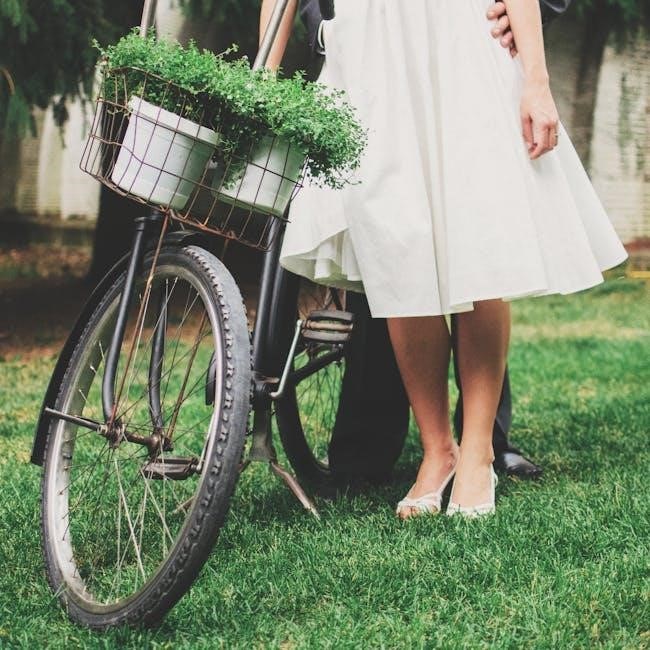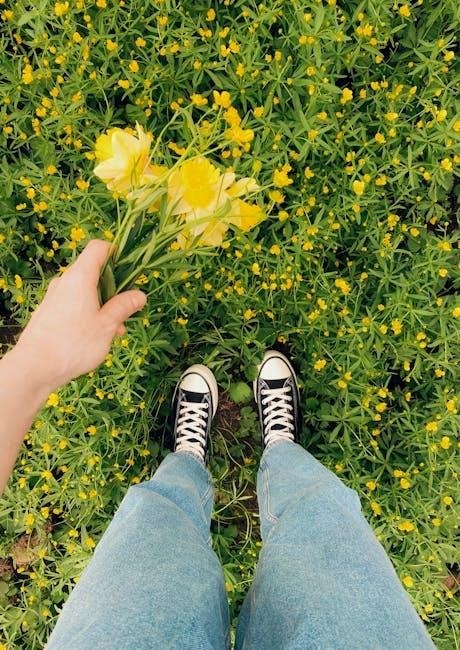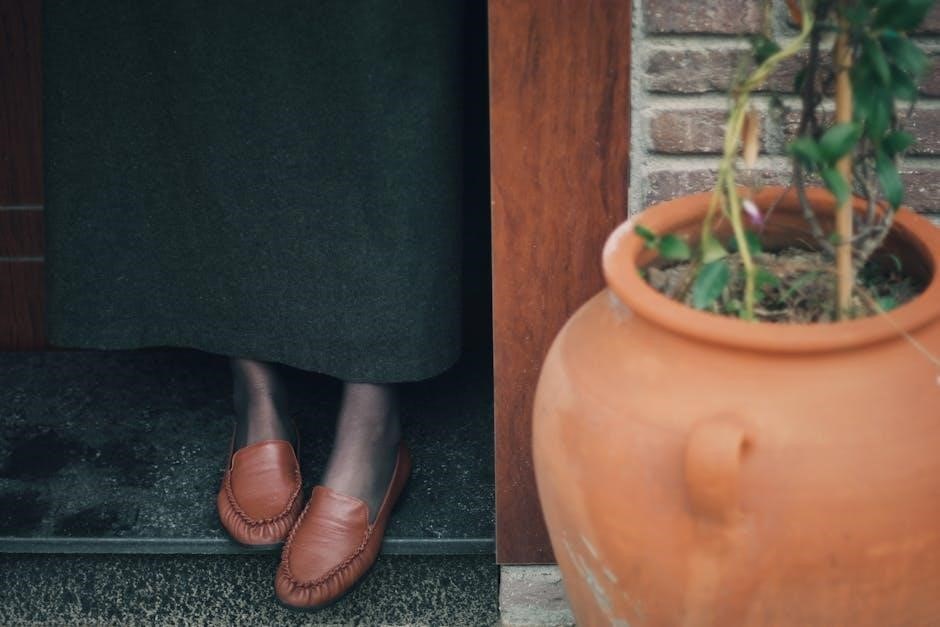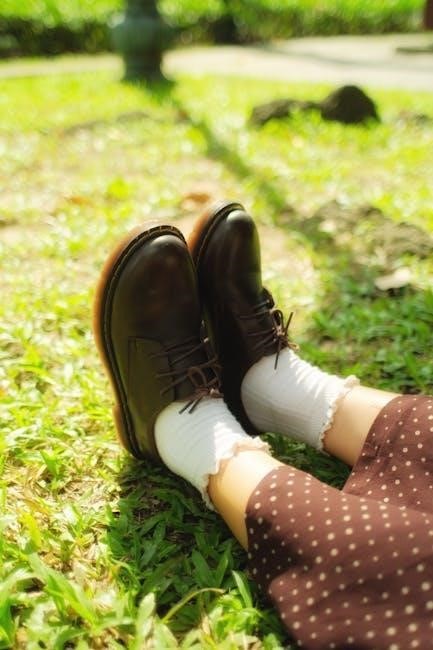Square Foot Gardening is a practical, space-efficient method using a grid system to organize plants in small, manageable squares, typically 1×1 foot. It simplifies garden management, reduces resource consumption, and maximizes productivity, making it ideal for both beginners and experienced gardeners. A Square Foot Gardening chart serves as a valuable tool to plan and optimize plant placement, ensuring the best use of space and resources.
1.1 What is Square Foot Gardening?
Square Foot Gardening is a highly organized gardening method that divides growing spaces into small, manageable 1×1 foot squares. It emphasizes efficient use of space, reducing water and resource consumption. This system is ideal for small gardens, balconies, or yards, making it accessible to all gardeners. The method promotes optimal plant placement and care, ensuring maximum productivity in minimal space.
1.2 Brief History and Evolution of the Method
Square Foot Gardening was developed in the 1980s by Mel Bartholomew, introducing a revolutionary 1×1 foot grid system. Initially designed to simplify gardening for small spaces, it gained popularity worldwide. Over time, gardeners adapted the method, refining techniques and materials while maintaining its core principles of efficiency and productivity. Today, it remains a beloved approach for growers of all levels, emphasizing sustainability and ease of use.

Benefits of Square Foot Gardening
Square Foot Gardening maximizes space, reduces water and resource use, and simplifies maintenance. It boosts productivity, minimizes waste, and ensures efficient plant growth in organized, small sections.
2.1 Space Efficiency and Productivity
Square Foot Gardening excels in maximizing space by using a grid layout, often 1×1 foot squares, to grow multiple plants in a compact area. This method reduces waste and increases productivity, allowing gardeners to harvest more crops in smaller spaces. The organized structure ensures efficient use of every inch, making it ideal for urban or limited-space gardens while maintaining high yields and accessibility for maintenance.
2.2 Reduced Water and Resource Consumption
Square Foot Gardening minimizes water and resource use through its organized, grid-based system. By planting in defined squares, gardeners avoid overwatering and reduce soil evaporation. The method also promotes efficient use of nutrients, as plants are spaced optimally. This structured approach ensures resources are used wisely, lowering overall consumption while maintaining healthy plant growth and productivity.
2.3 Simplified Garden Management
Square Foot Gardening offers a streamlined approach to garden maintenance. Its grid-based layout allows for easy access to each plant, simplifying tasks like watering, fertilizing, and pest control. The structured system reduces the need for frequent adjustments, while the square foot gardening chart provides clear guidelines, making it easier for gardeners of all levels to manage their space effectively and efficiently.
Understanding the Square Foot Gardening Chart
The Square Foot Gardening Chart is a detailed guide that helps gardeners determine plant spacing and the number of plants per square foot. It maximizes garden yield by providing clear, organized spacing recommendations for various plants, ensuring efficient use of space and resources while minimizing waste.
3.1 What is a Square Foot Gardening Chart?
A Square Foot Gardening Chart is a visual guide that divides gardens into 1×1 foot squares, detailing optimal plant spacing and quantities. It helps maximize space, reduce waste, and ensure proper plant growth. The chart typically includes plant names, spacing requirements, and numbers per square, making it an essential tool for planning and organizing a Square Foot Garden efficiently.
3.2 How to Read and Use the Chart
To use a Square Foot Gardening Chart, identify the plant you want to grow and locate its spacing requirements. Match the plant’s spacing needs to the grid, marking the number of plants per square. For example, lettuce may require 4 plants per square, while tomatoes need 1. Use the chart to avoid overcrowding and ensure proper growth, maximizing space and productivity in your garden layout.
Creating a Square Foot Garden Plan
Assess your garden space, considering sunlight and soil conditions. Use a Square Foot Gardening Chart to map your layout, ensuring efficient plant placement and optimal growth.
4.1 Assessing Your Garden Space
Begin by evaluating your garden’s natural light, drainage, and soil conditions. Measure the available space to determine how many 1×1 foot squares can fit. Consider existing plants and structures. Use the Square Foot Gardening Chart to plan a layout that maximizes space efficiently while ensuring proper plant placement and growth conditions.
4.2 Mapping Your Garden Layout
Use a Square Foot Gardening chart to visualize your garden layout. Assign plants to specific squares based on spacing needs; Label each square with the plant name and number of plants per square. Sketch the layout on paper to ensure proper arrangement and avoid overcrowding. This step ensures efficient use of space and helps you achieve a balanced, productive garden design.

Plant Spacing and Number of Plants per Square
Use a Square Foot Gardening chart to determine optimal plant spacing. Each square typically holds 1-16 plants, depending on the plant size and growth requirements.
5.1 General Guidelines for Plant Spacing
Plant spacing varies by species, with larger plants needing more room; Use the Square Foot Gardening chart to determine spacing, ensuring proper growth. Smaller plants like lettuce can fit up to 16 per square, while larger plants like tomatoes require 1 per square. Always check seed packet instructions for specific spacing needs. Proper spacing prevents overcrowding and promotes healthy root development and air circulation.
5.2 Examples of Plants and Their Spacing Requirements
Plants vary in spacing needs. For example, leaf lettuce requires 4-6 plants per square, while cherry tomatoes need 1 plant per square. Radishes can be spaced 9-16 per square, and carrots 12-16. Larger plants like zucchini require 1 per square, while herbs like basil can have 4-6 per square. Always refer to the Square Foot Gardening chart for specific spacing recommendations to ensure optimal growth.

Choosing the Right Plants for Your Square Foot Garden
Selecting the right plants for your Square Foot Garden is essential. Use the Square Foot Gardening chart to guide your choices, considering factors like light exposure, soil type, and mature plant size. Opt for vegetables, herbs, or flowers that thrive in small spaces, ensuring a diverse and productive garden layout.
6.1 Recommended Vegetables and Flowers
For a thriving Square Foot Garden, choose compact or dwarf varieties of vegetables and flowers. Leaf lettuce, radishes, cherry tomatoes, and herbs like basil or parsley grow well in small spaces. Marigolds, nasturtiums, and violas add color and attract pollinators. Use the Square Foot Gardening chart to determine the best plants for each square, ensuring a balanced and productive garden layout that maximizes space efficiently.
6.2 Companion Planting Tips
Companion planting enhances growth and pest resistance. Pair marigolds with tomatoes to deter nematodes, or basil with vegetables to improve flavor and repel pests. Nasturtiums attract beneficial insects, while herbs like mint can boost nearby plant health. Avoid planting fennel near tomatoes, as it hinders growth. Use the Square Foot Gardening chart to plan compatible combinations, ensuring a harmonious and productive garden layout.

Maintaining Your Square Foot Garden
Water plants deeply but avoid overwatering. Feed with organic fertilizers. Check soil moisture daily. Mulch to retain moisture and suppress weeds. Inspect for pests and diseases regularly. Use neem oil or natural deterrents. Keep the garden clean and well-organized for optimal plant health and productivity.
7.1 Watering and Feeding Your Plants
Water plants deeply but avoid overwatering. Use a watering can or soaker hose to target roots. Feed with organic fertilizers like compost or worm casting. Mulch to retain moisture and suppress weeds. Check soil moisture daily by inserting a finger into the soil. Maintain a balanced diet for plants to ensure healthy growth and productivity.
7.2 Managing Pests and Diseases
Prevent pests and diseases by maintaining healthy soil and proper spacing. Regularly inspect plants for signs of infestation or infection. Use organic solutions like neem oil or insecticidal soap for pests. Remove diseased plants promptly to prevent spread. Encourage beneficial insects and practice crop rotation. Keep the garden clean, removing debris that may harbor pests or pathogens. Act early to protect your harvest and ensure plant health.
Square foot gardening is a efficient, productive, and organized method to grow plants. Use the chart to plan effectively and enjoy a bountiful harvest with minimal space.
8.1 Summary of Key Points
Square foot gardening is a practical method that optimizes space and productivity. By using a grid system, gardeners can maximize yield while minimizing resources. The square foot chart provides a clear guide for plant spacing and layout, ensuring efficient use of space. This approach simplifies garden management and supports sustainable gardening practices, making it accessible for gardeners of all skill levels.
8.2 Encouragement and Next Steps
Embrace the simplicity and efficiency of square foot gardening! Start by creating a personalized garden plan using the chart as your guide. Begin with a small grid and gradually expand as you gain confidence. Experiment with different plants and layouts to maximize your space. Share your progress with fellow gardeners and explore additional resources to refine your skills. Happy gardening!
The Future of Square Foot Gardening
Square foot gardening continues to evolve, embracing technological tools and sustainable practices. Its adaptability to urban spaces and eco-friendly approaches ensure its growing popularity and effectiveness.
9;1 Innovations and Trends
Modern advancements in square foot gardening include smart gardening apps, vertical gardening systems, and hydroponic integrations. Innovations like soilless cultivation and AI-driven plant care tools are gaining traction. Sustainable practices, such as recycling water and using renewable materials, are also becoming popular. These trends enhance efficiency, reduce environmental impact, and make square foot gardening more accessible to urban and tech-savvy growers.
9.2 How to Stay Updated and Involved
To stay updated on square foot gardening, subscribe to newsletters, join online forums, and follow gardening blogs; Attend workshops or webinars for hands-on learning; Engage with local gardening clubs to share experiences and gain insights. Participate in community projects or online groups to stay connected with fellow gardeners. Regularly check for new tools, guides, and resources to enhance your gardening journey and contribute to the growing community.
